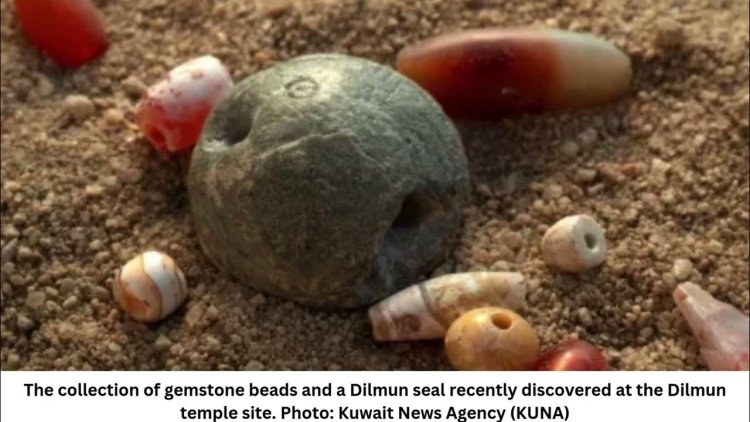Archaeologists Uncover 4,000-Year-Old Dilmun Temple on Kuwait’s Failaka Island

A Landmark Discovery in Kuwaiti Archaeology-
Archaeologists in Kuwait have uncovered a 4,000-year-old temple dating back to the Dilmun civilization on Failaka Island, in what is being hailed as one of the most significant archaeological finds in decades, according to Al Qabas newspaper.
The discovery was announced on Sunday by the National Council for Culture, Arts and Letters (NCCAL), which confirmed that the ancient structure was excavated by a joint Kuwaiti–Danish team from Denmark’s Moesgaard Museum during the 2025 archaeological season.
Two Ancient Temples Built on the Same Site-
According to Mohammed bin Redha, Acting Assistant Secretary-General for Antiquities and Museums at the NCCAL, archaeologists uncovered the complete layout of a Bronze Age temple directly beneath another Dilmun temple unearthed last year.
The finding confirms that two temples were built on the same site, one atop the other, both dating back roughly 4,000 years. “This dual structure underscores the site’s continued religious importance throughout the early Dilmun period,” Bin Redha said.
The excavation focused on Tell F6, a mound east of the Dilmun palace and temple complex, known to belong to the early Dilmun period (circa 1900–1800 BCE).
Evidence of Early Religious Practices-
Dr. Stefan Larsson, head of the Danish mission, explained that previous excavations had revealed wall fragments likely belonging to a small temple platform dated around 1900 BCE.
The newly uncovered structure, found beneath that level, included stone foundations, seals, and pottery vessels, confirming its link to the early Dilmun era.
“This marks a major step in understanding the religious practices of the Dilmun Kingdom,” Larsson said.
Dr. Hassan Ashkanani, professor of archaeology and anthropology at Kuwait University, called the discovery “a remarkable archaeological milestone,” adding that finding two superimposed temples from between 1900 and 1800 BCE adds a crucial new dimension to the study of Dilmun’s religious and civic architecture.
Expanding Knowledge of Ancient Dilmun Civilization-
The latest discovery brings the total number of known temples in the southwestern region of Failaka to four, suggesting that the area once served as a major administrative and spiritual center in the Bronze Age
Dr. Ole Herslund, excavation supervisor since 2022, said ongoing research will analyze both temples’ architectural layouts, ritual spaces, and artifacts to better understand how Dilmun’s religious, cultural, and political institutions shaped life on the island.
Failaka Island: A Bronze Age Crossroads-
Located about 20 kilometers off Kuwait’s coast, Failaka Island was a thriving hub of the Dilmun civilization, which flourished across the Gulf region during the Bronze Age. The island served as a key trading and cultural link between Mesopotamia, the Arabian Peninsula, and the Indus Valley.
The NCCAL reaffirmed its commitment to supporting ongoing excavation, restoration, and scientific research aimed at preserving Kuwait’s ancient heritage and deepening understanding of its historical role in regional civilization networks.
Related Resources:























